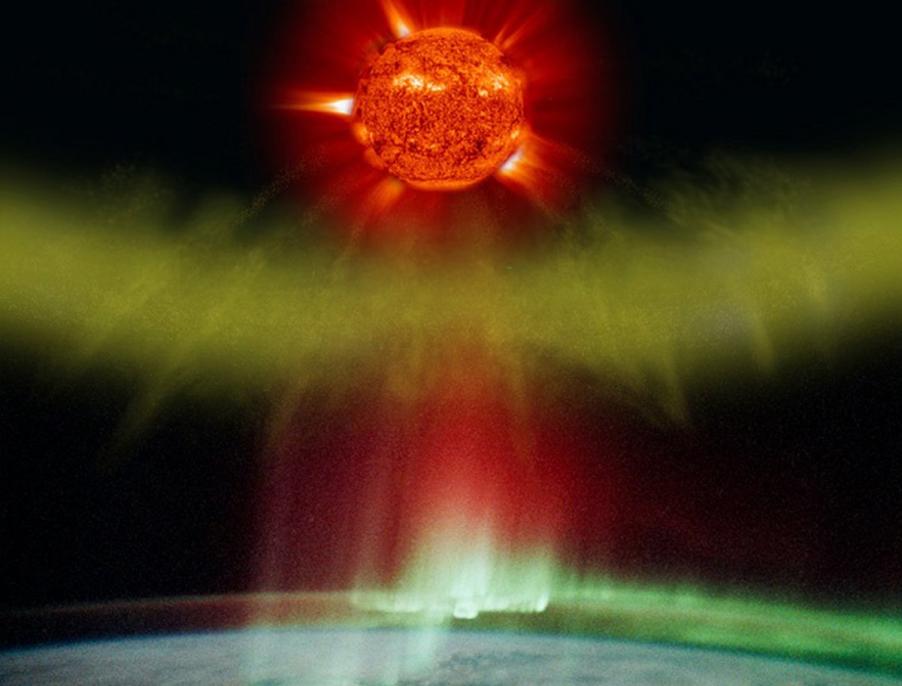Unveiling the Enigmas of the Northern Lights Magnetosphere: Future Research Directions and Opportunities
The Northern Lights, also known as Aurora Borealis, have captivated humanity for centuries with their ethereal beauty and enigmatic nature. These celestial displays are a testament to the dynamic interplay between the Earth's magnetic field and the solar wind, giving rise to a region known as the magnetosphere.

The magnetosphere is a vast and complex region that extends tens of thousands of kilometers into space, shielding our planet from harmful solar radiation and shaping the behavior of charged particles in its vicinity. Understanding the intricacies of the magnetosphere is crucial for unraveling the mysteries of space weather, climate change, and the fundamental processes that govern our solar system.
Current State Of Research
In recent decades, significant progress has been made in exploring the magnetosphere. Ground-based observatories, satellite missions, and sophisticated modeling techniques have provided valuable insights into its structure, dynamics, and interactions with the solar wind. However, many questions remain unanswered, presenting exciting opportunities for future research.
Future Research Directions
Exploring the Magnetosphere's Structure and Dynamics
- Investigating the role of solar wind-magnetosphere interactions in shaping the magnetosphere's structure and dynamics.
- Studying the formation and evolution of magnetospheric substorms, which are sudden releases of energy that can disrupt Earth's magnetic field.
- Examining the dynamics of the magnetopause, the boundary between the magnetosphere and the solar wind, and the magnetotail, the region of the magnetosphere that extends away from the Earth.
Understanding the Magnetosphere's Role in Space Weather
- Analyzing the impact of geomagnetic storms, caused by solar activity, on Earth's systems, including power grids, communication networks, and satellite operations.
- Investigating the relationship between solar activity and space weather events, such as solar flares and coronal mass ejections, to improve forecasting and mitigation strategies.
- Developing predictive models for space weather forecasting, enabling timely warnings and protective measures against potential disruptions.
Investigating the Magnetosphere's Impact on Climate
- Studying the role of magnetospheric processes in atmospheric heating, including the generation of auroral emissions and the impact on atmospheric circulation.
- Examining the influence of the magnetosphere on cloud formation and precipitation patterns, exploring potential links between space weather and climate variability.
- Exploring the potential effects of magnetospheric activity on climate change, considering the long-term implications of solar-terrestrial interactions on Earth's climate system.
Research Opportunities
Utilizing New Observational Techniques
- Employing advanced ground-based instruments, such as magnetometers, all-sky cameras, and radar systems, to monitor magnetospheric phenomena.
- Utilizing satellite missions dedicated to magnetospheric studies, such as the Magnetospheric Multiscale Mission (MMS) and the Solar Orbiter, to obtain in-situ measurements and observations.
- Exploring the potential of space-based telescopes, such as the James Webb Space Telescope, for magnetospheric observations, particularly in the infrared and ultraviolet wavelengths.
Developing Advanced Modeling and Simulation Tools
- Creating realistic models of the magnetosphere that incorporate the latest observational data and theoretical understanding.
- Simulating magnetospheric processes using high-performance computing resources to investigate complex phenomena and test hypotheses.
- Incorporating artificial intelligence and machine learning techniques into magnetospheric modeling to improve accuracy and predictive capabilities.
Fostering International Collaboration
- Encouraging joint research projects between scientists from different countries to pool expertise and resources.
- Establishing international observatories and research centers dedicated to magnetospheric studies, facilitating data sharing and collaborative efforts.
- Promoting the exchange of data and knowledge among researchers worldwide, fostering a global community of magnetospheric scientists.
The Northern Lights magnetosphere presents a vast and unexplored frontier, holding the key to understanding fundamental processes in space physics, space weather, and climate change. By pursuing the outlined research directions and seizing the available opportunities, we can unravel the mysteries of this enigmatic region and gain valuable insights into the dynamic interplay between the Earth, the Sun, and the cosmos.

Continued research in this field promises not only to expand our knowledge of the universe but also to provide practical benefits for society, such as improved space weather forecasting, enhanced protection of critical infrastructure, and a deeper understanding of the Earth's climate system.
YesNo

Leave a Reply